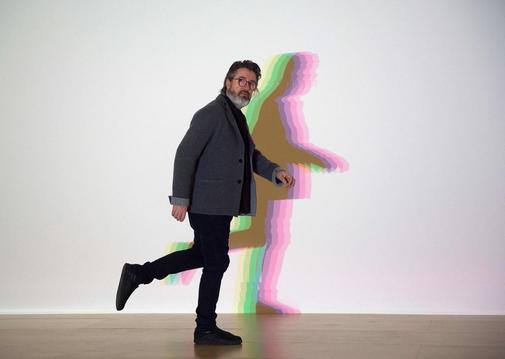- Interview. "There is no room for uncertainty"
Some information about the artist Olaffur Elíasson: he is very nice, he is Danish, he is Icelandic, he is German, he is an ecologist, he is a friend of René Redzepi and Mary Robinson, he is European, he speaks English very well but it is understood , he is feminist, he is On the wave of Greta Thunberg, he is a vegetarian, he connects well with young people, he says he is not an activist because the word activist is very serious but well, more or less, he fills the Tate, fills Serralves, fills the Kunsthaus in Munich and goes to fill the Bilbao Gugenheim (since this week he exposes In real life , a retrospective of 30 years of career), he lives in Berlin, he does not go intellectual but if he is asked he speaks with sophistication of conceptual art and experimental architecture, he comes out in a Netflix documentary , invents ecological light bulbs for Africa and things like that. And, above all, it makes hours of art and installations ... how to say it?
"It does very cool things " would be the most appropriate expression. For example: in the Guggenheim he has arranged a room in perfect darkness in which a fountain sounds and the humidity is felt. Suddenly, a flash jumps, a strobe that lasts half a second and ... Very cool, really.
«The entertainment industry has invaded everything, also art. Art has become a commodity, "Eliasson explains to The Sphere of Paper ." What was always considered art is part of the economy of fun. But it is also an opportunity to communicate with people who otherwise would not have been able to connect. That's what I thought when I was offered to make the Netflix documentary. I felt that I could act as the ambassador to represent everything that I understand art to be about ... Art and culture are very important fields for civil society, but often artists don't know how to sell that paper . We all have to find a balance between entertainment and the most serious discussion. I remember the first time I went to the New Museum in New York. There was another spectator in the museum, he and I alone. The experience as a lonely contemplation was wonderful, I remember having those rothkos for myself ... but, if you think about it, there is something very sad in an empty museum, something very elitist and failed. I want my study to be like a parliament, a party, a dialogue and ideas and inspiration to be shared ».
A little context: for 30 years, Olaffur Eliasson's career has been directed at the border between art, science and social research. His studio has 60 employees and it is easy to imagine it as something similar to Rem Koolhaas's office . In fact, one of the rooms of the Guggenheim is a large panel in which the information is piled up as in a collage , as in the books of Koolhaas: seemingly messy but carefully calculated, full of bits of intimacy, academic references, private jokes, mythomanias, press clippings ... In one of those pictures, Elíasson explains a trick against oblivion that comes to say: «If your grandfather lives but is already very old, squeeze your closed eyelids with your fingers after looking at him. Do it every time you go to see it. And so, you can always recreate its image ».
Sometimes, Eliasson looks like Koolhaas. Other times it seems Chris Martin of Coldplay, or some pop star of that style, with a vocation of social leadership. «I believe in cooperation and not in competitiveness». And one more: «We treat young people as if they were fools. Look at the reaction to Greta Thunberg ».
"I can't work in an empty room, without people," continues Eliasson. «I need people around to inspire me, I need friction for a reading to inspire me. When I'm alone, I doubt until it exists . As work? Very intuitively. Something interests me, I draw a picture or write an idea and I confront it with the people around me. And the drawing is growing, it becomes something bigger. When I see the result, the final object, I see the process, the process is before our eyes ... People believe that creativity is about choosing blue or red but no, creativity is about taking a topic to the last consequences so that this task leads us to choose blue or red ».
An example: Eliasson began photographing glaciers many years before climate change was on the agenda. Today, in the Guggenheim it has arranged a waterfall with its permanent rainbow because to talk about the environment you have to wrap the message in colored paper.
Anything else? Yes. We asked Eliasson for beauty, but the artist starts talking about machismo. «The heritage of the patriarchate is the elephant in the room of this country. I say it with compassion.
According to the criteria of The Trust Project
Know more- art
- culture
- Greta Thunberg
- Environment
CultureMiquel Navarro's uncovered secrets
PROPOSAL 10 free plans not to give up culture even if money is lacking
A villain in Madrid

